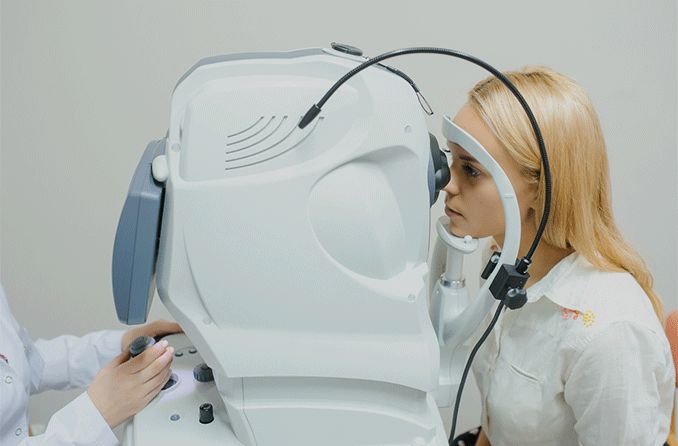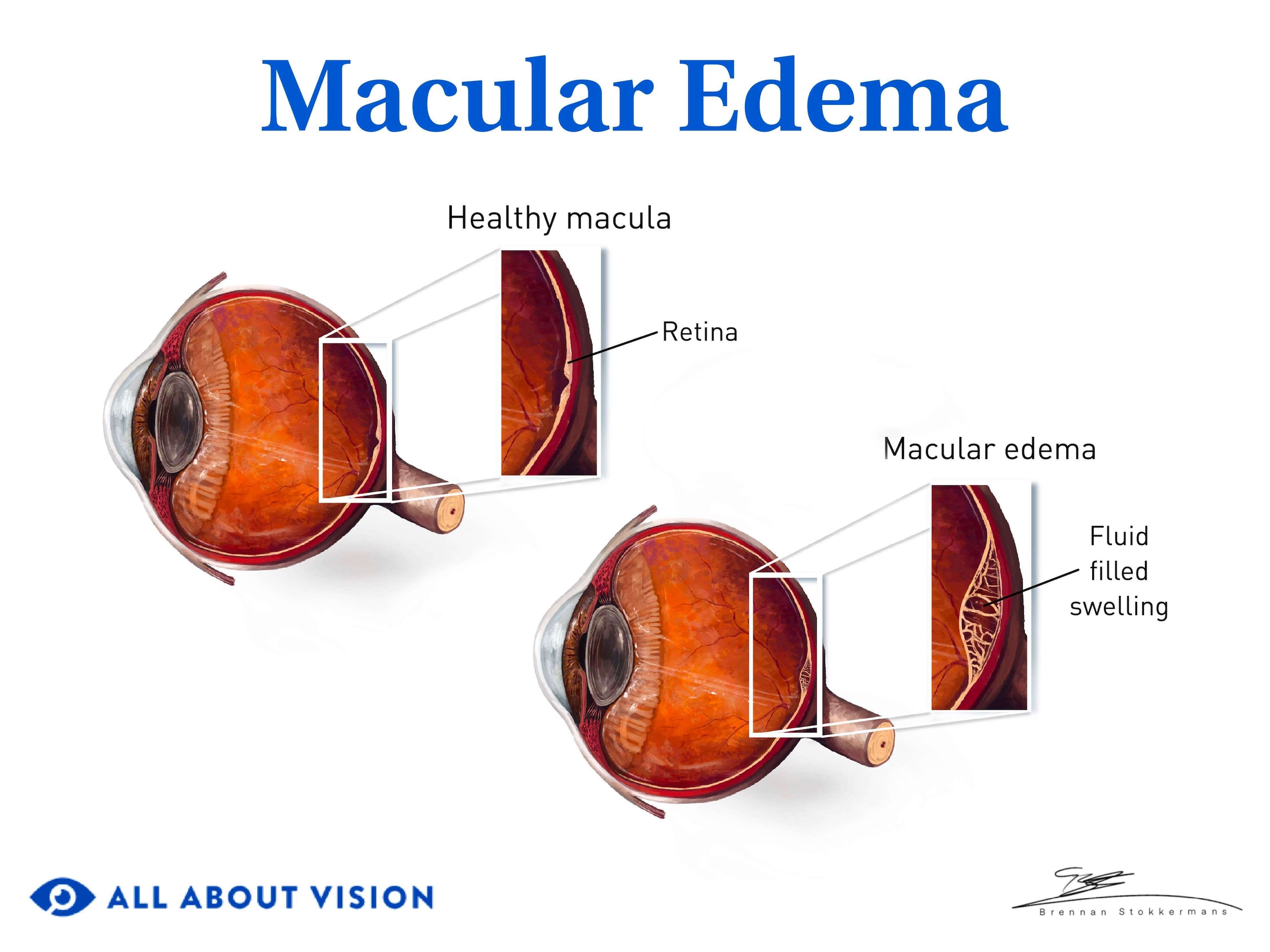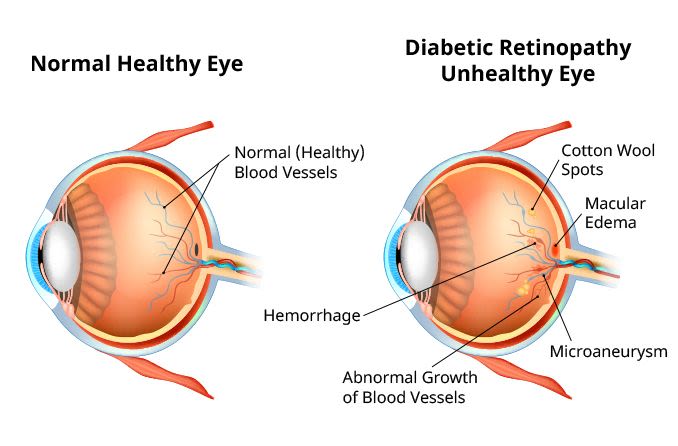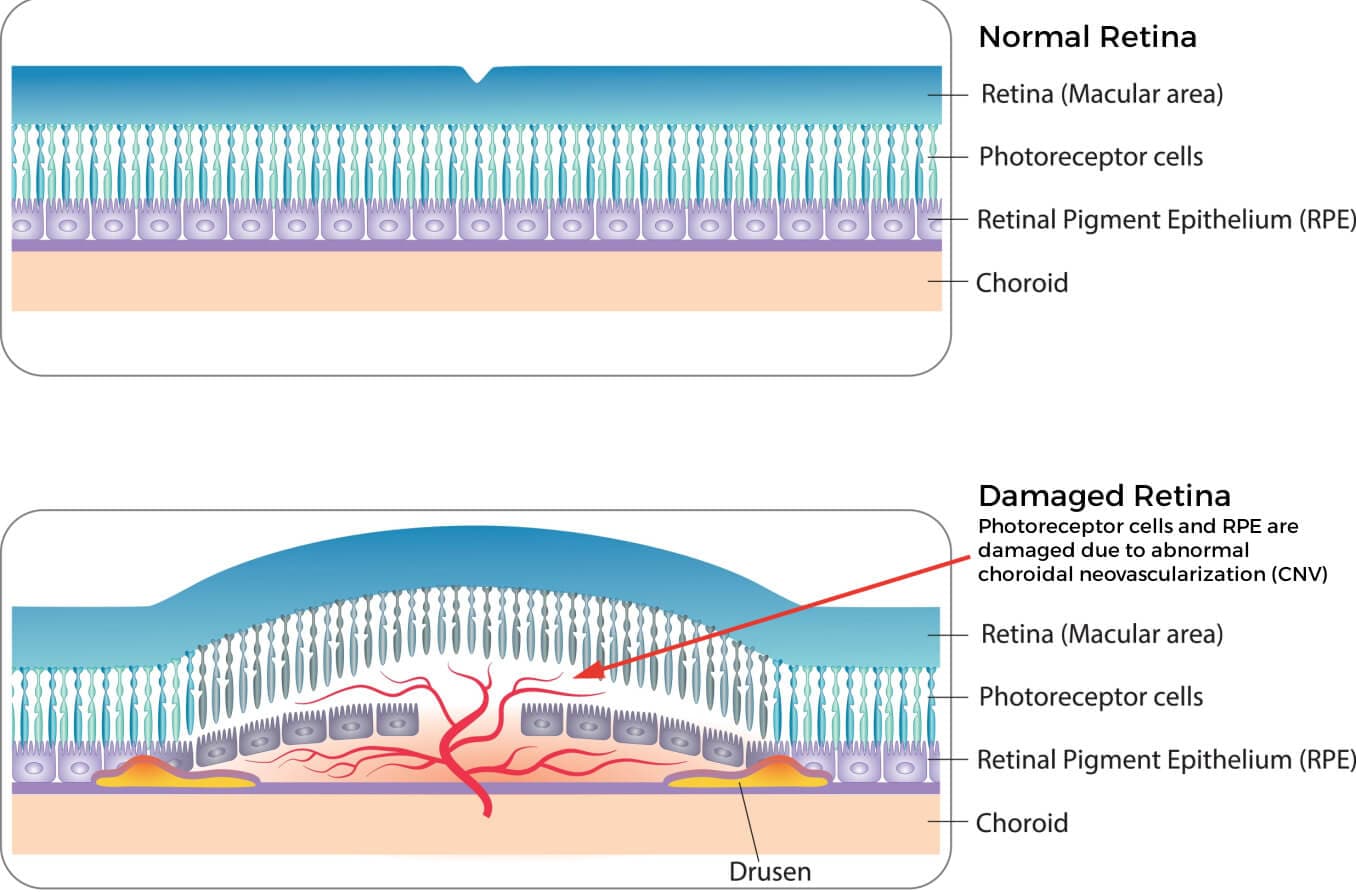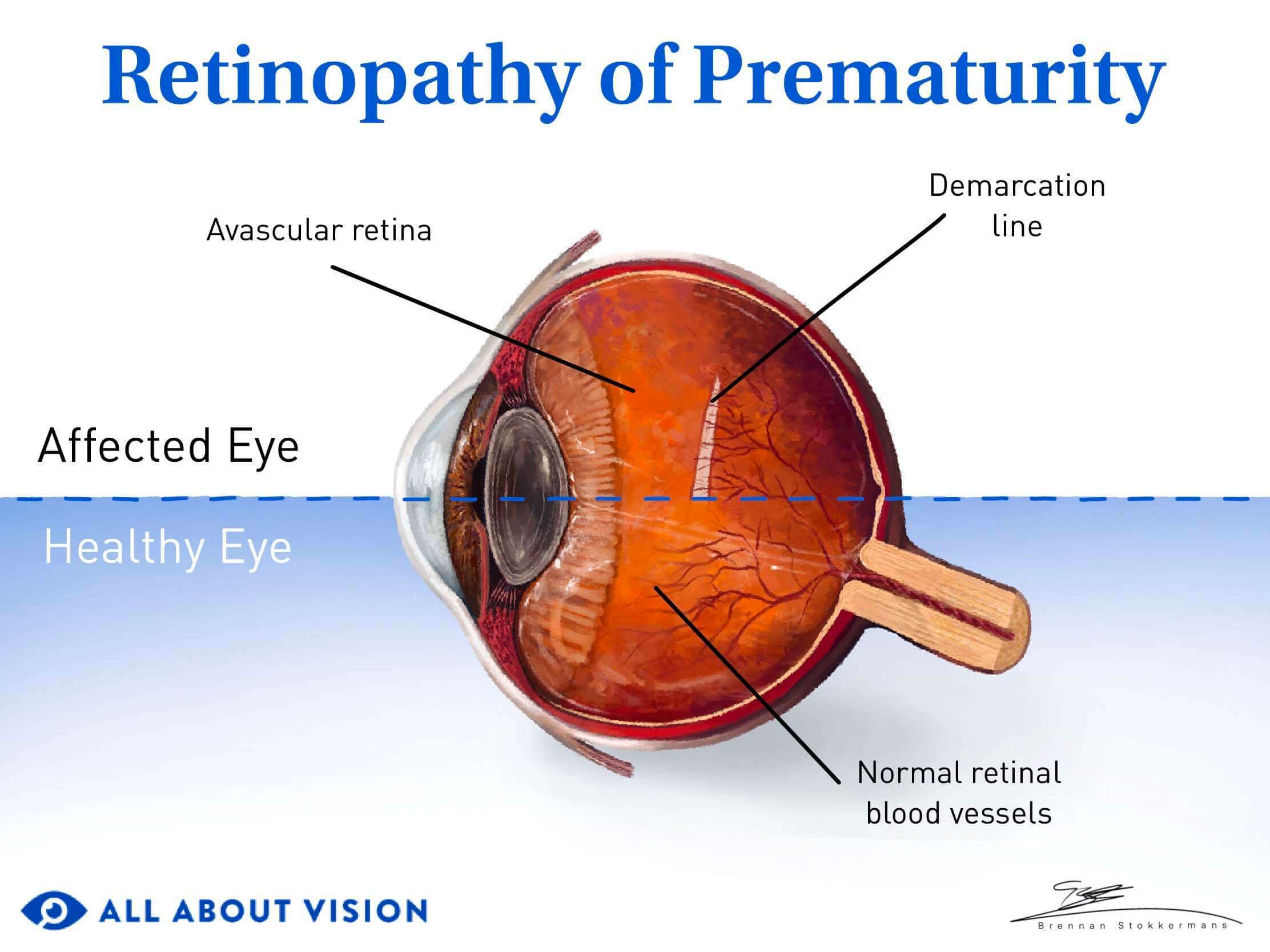What is an anti-VEGF injection?
An anti-VEGF injection can help slow the growth of abnormal, leaking blood vessels in wet macular degeneration and other eye conditions, preventing vision loss. The injection is given in the white part of the eye. It is performed in the office, is quick and usually causes minimal discomfort.
Anti-VEGF treatment can be used to treat eye conditions that cause the overproduction of a naturally occurring protein called vascular endothelial growth factor (VEGF). The excess VEGF can result in the growth of abnormal blood vessels, which leak fluid and blood, damaging the light-sensing tissue in the eye called the retina.
The anti-VEGF medicine goes into the vitreous humor, the gel-like substance that fills the eye. This is why the procedure is also called an intravitreal anti-VEGF injection treatment. The eye doctor will numb the eye and insert a very small, thin needle in the white of the eye. The injection only takes a few seconds.
These medications slow down the progression of the disease, but they are not a cure for conditions, such as wet age-related macular degeneration (AMD). Follow-up treatments are typically needed. Based on your condition, you might need to get these injections for several months or even years. In some cases, eye doctors may use anti-VEGF injections along with other treatments to give you the best chance of preserving your eyesight.
How anti-VEGF injections work
Anti-VEGF injections block a protein called vascular endothelial growth factor (VEGF). This is a protein your body releases to signal for the growth of new blood vessels during the healing process.
However, certain eye conditions can stimulate the release of too much VEGF. This can cause abnormal blood vessels to develop. These vessels are prone to leaking fluid and blood, resulting in swelling and damage to the delicate cells of the retina. This is especially true if it occurs in the center of the retina, known as the macula. This area is crucial for clear central vision and essential for daily tasks, such as reading, recognizing faces and driving.
Anti-VEGF drugs bind to the receptors involved with the VEGF pathway and block its action. When VEGF is blocked, these new, abnormal blood vessels do not grow as much, and leaking is reduced. Anti-VEGF injections can help prevent damage to the retina, preserving your vision and sometimes even improving it.
Procedure
Several anti-VEGF injections are available. The procedure for administering these intravitreal injections is similar. The actual injection takes only a few seconds and is given through the white part of your eye.
How to prepare
Preparing for the day of the procedure will help you have the best possible results:
- Arrange for someone to drive you home from your appointment.
- You should bring your glasses and wear loose, comfortable clothing.
- If you have diabetes, bring a snack.
- Do not wear eye makeup or false eyelashes on the day of the procedure or for three days afterward.
- Inform the staff of any allergies, changes in your health or medication. This includes infections, heart attack or stroke in the last three months.
Before the procedure
Your eyes will be evaluated to make sure it is safe to perform the treatment, and:
- Your vision will be tested.
- Your eye pressure will be checked.
- Your eye may be scanned.
- You may receive a questionnaire to fill out.
During the procedure
The needle is very small and thin. The injection itself is very quick with minimal discomfort:
- An antiseptic solution will be used to clean the skin thoroughly.
- The injection site will be numbed with drops.
- A drape will be placed over the eye.
- A small device will be placed on your eye to keep your eyelid open.
- The doctor will inject the medicine through the white of the eye.
Much of the discomfort during the procedure is often due to the antiseptic used to clean the skin, rather than the injection itself. This antiseptic is critical for reducing the risk of serious infection.
After the procedure
After the injection:
- Your eye will be rinsed.
- The device holding your eyelids open will be taken off.
- The area around your eye will be cleaned.
You might experience mild eye irritation or redness at the injection site. Your vision and eyes will be checked by the eye doctor following the injection. You may be given eye drops to help with dryness. The staff will provide guidance on home care and set up your follow-up appointment.
Home care
Your eyesight may be blurry, and you might notice some spots in your vision. These are tiny air bubbles and will go away in one to two days. Your eye may have a small red spot, and you may also experience some soreness, redness or watery eyes for a few days. You can use artificial tears for dry eyes. Wait 30 minutes between artificial tears and other eye drops.
Call your doctor if you have:
- Severe eye pain.
- Increasing redness or yellow/green discharge.
- Worsening vision, flashing lights, many floaters or a curtain over your sight.
Keep your eye clean by gently wiping it with a cotton pad dipped in cooled, boiled water twice a day for three days. It’s fine to wash your hair and bathe, but keep your eyes closed to avoid soap or water getting in.
Continue with your usual activities, such as reading or watching TV. After 24 hours, you can drive if your vision is safe for driving.
To lower the risk of infection or complications, for the first three days after your injection:
- Don’t rub your eye (especially in the first hour).
- Don’t use eye makeup, false eyelashes or contact lenses.
- Don’t go swimming.
- Wait 48 hours before flying.
Frequency and duration of treatment
Your eye doctor will determine the specific medication and frequency of anti-VEGF injections based on your individual situation. Anti-VEGF injections typically take several months to begin working. This is why you receive an injection every four to six weeks at first. Once your eyes start to improve, you will need to continue receiving the shots but at a reduced frequency.
Typically, every 12 weeks or longer is recommended, although this varies from individual to individual. Some studies show that once stable vision is achieved, approximately half of the patients require only one injection per year. One out of four patients may be able to go a year or more without needing an injection.
Because everyone’s eyes react differently, your doctor may adjust your treatment plan. They will determine how frequently you need treatment using diagnostic techniques, such as:
- Optical coherence tomography (OCT)
- Fluorescein angiography (FA)
Clinical studies have shown that anti-VEGF injections help over 90% of patients maintain their vision. However, the actual percentage may be closer to 50%, as visiting the eye doctor for injections can be challenging for many older adults. Researchers are exploring new treatments that require fewer injections.
Benefits of anti-VEGF injections
Before anti-VEGF treatment became available about 10 years ago, many people, such as those with wet AMD, experienced a significant loss of central vision. With anti-VEGF treatment, individuals can now maintain their ability to read and drive for longer.
These treatments work through several connected mechanisms, improving eye health, functional vision and quality of life. Anti-VEGF treatment has been shown to:
Block the development of abnormal vessels
Anti-VEGF medications work by binding receptors in the VEGF pathway. By doing this, they block the growth of new, leaky blood vessels.
Reduce swelling in the macula
Anti-VEGF medications help prevent fluid and blood from leaking from blood vessels, which can cause swelling in the central retina, known as macular edema.
Slow vision loss or improve vision
For most people, anti-VEGF injections help prevent their eyesight from worsening. Roughly one-third of those undergoing this treatment experience improved vision.
Enhance quality of life
Researchers have found that being able to see clearly and continue driving is strongly associated with a high quality of life. Anti-VEGF medications help people maintain their vision and driving ability for longer.
Conditions treated with anti-VEGF injections
Anti-VEGF medications effectively treat multiple eye conditions that share a common problem: too much VEGF protein causing harmful blood vessel growth. These conditions include:
Wet age-related macular degeneration (wet AMD)
Wet age-related macular degeneration affects the center of your vision, impairing your ability to see details clearly. It is the most common cause of vision loss in adults over 50 years. Around 10% – 15% of patients with dry macular degeneration will develop wet macular degeneration. Wet AMD develops when abnormal blood vessels grow under the retina — a process known as neovascularization. Anti-VEGF drugs are the first-line treatment to stop the growth of these abnormal blood vessels.
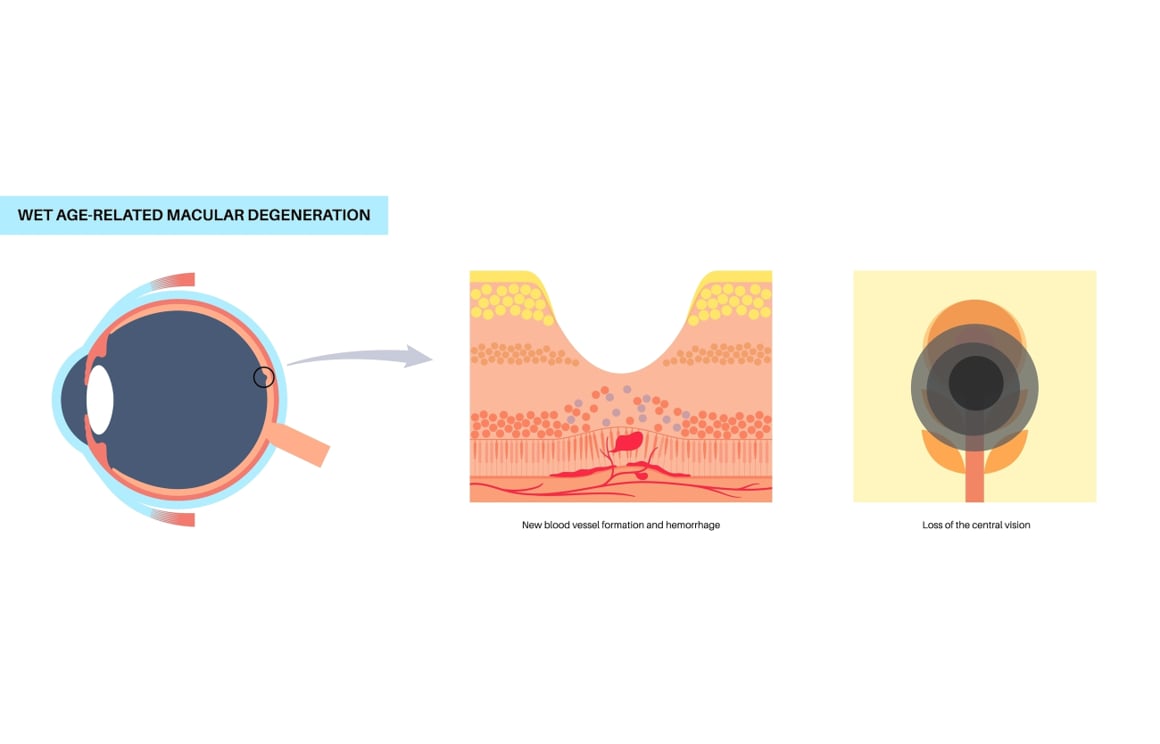
Diabetic macular edema (DME)
Diabetic retinopathy occurs when high blood sugar damages the blood vessels in your retina. If the swelling occurs in the macula (the central part of the retina), it is referred to as diabetic macular edema. Macular edema is the main reason people with diabetes experience vision loss. The swelling causes blurry central vision and can significantly impair your ability to do daily tasks. Anti-VEGF treatment is very effective at reducing this swelling.
Proliferative diabetic retinopathy (PDR)
PDR is an advanced stage of diabetic retinopathy. This means that the retina has developed new, abnormal blood vessels due to the excessive release of VEGF. Anti-VEGF injections reduce the growth of abnormal blood vessels and decrease swelling in the retina.
Retinal vein occlusion (RVO)
A retinal vein occlusion occurs when a vein in the eye gets blocked. RVO can lead to complications, such as the growth of new, abnormal blood vessels in the retina and iris (the colored part of the eye). Depending on the severity of the condition, regular injections may be necessary for one to two years.
Myopic choroidal neovascularization (myopic CNV)
Myopic CNV develops in people with severe myopia (nearsightedness). It occurs when the choroid, the layer of nourishing tissue beneath the retina, begins to develop abnormal blood vessels. This is called choroidal neovascularization. Anti-VEGF is considered the first-line treatment to block the growth of leaky, new blood vessels in the choroid.
Neovascular glaucoma
Glaucoma is a group of diseases that damage the optic nerve, the nerve that relays messages from the eyes to the brain. Neovascular glaucoma is a type of glaucoma where new, abnormal blood vessels grow in the front of the eye, blocking the eye’s drainage channels. This leads to high eye pressure, which can damage the optic nerve and cause vision loss.
Neovascular glaucoma is often triggered by reduced blood flow to the retina, which stimulates the release of VEGF. Anti-VEGF injections can be an effective treatment for this type of glaucoma.
Retinopathy of prematurity (ROP)
This condition affects premature infants, causing abnormal blood vessel growth in the retina. This may lead to scarring and retinal detachment. Anti-VEGF treatments can help treat severe cases of ROP and help babies’ retinas develop more normally.
Types of anti-VEGF medications
Patients may respond differently to medications, and certain drugs are more effective in managing specific conditions. Your eye doctor will determine the most suitable treatment for your eye condition. Several anti-VEGF medications are available:
Bevacizumab (Avastin)
Avastin was initially designed to treat cancer, but it is commonly used as an anti-VEGF treatment for eye conditions. Because it is significantly cheaper than other anti-VEGF drugs, it is used “off-label” for eye conditions. Since 2005, studies have shown that Avastin is safe and effective in treating eye diseases. Avastin injections are typically given every four to six weeks.
Ranibizumab (Lucentis)
Lucentis is an anti-VEGF drug specifically designed for eye conditions. It was the first anti-VEGF drug approved by the FDA for eye conditions. The medication particles are smaller in size than Avastin, so they may penetrate retinal tissue better. It is usually given once a month and may then be switched to every three months after the first three or four injections.
READ MORE: Lucentis vs. Avastin: A macular degeneration treatment controversy
Susvimo (Lucentis/ranibizumab implant)
Susvimo is an eye implant that comes prefilled with ranibizumab, providing continuous drug delivery. It is designed to reduce the need for frequent injections. The implant is roughly the size of a grain of rice and is surgically placed in the eye during a one-time outpatient procedure. It is refilled every six months in the doctor’s office.
Aflibercept (Eylea/Eylea HD)
Eylea is chosen by eye doctors because it can last longer between injections for some people. It has also shown particular effectiveness in patients with more severe vision loss. Regular Eylea is typically given monthly for wet AMD for the first three months, then every two months. The high-dose version (Eylea HD) allows for an extended dosing schedule, given every eight to 16 weeks after the initial doses.
Brolucizumab (Beovu)
Beovu was designed to last longer in the eye and has a smaller molecular size, which may allow it to penetrate the eye’s tissues more effectively. It is usually given once a month for the first three months, then every eight to 12 weeks. However, doctors must monitor patients receiving Beovu closely due to higher rates of eye inflammation compared to other anti-VEGF medicines.
Faricimab (Vabysmo)
Vabysmo is the newest anti-VEGF drug, approved in 2022. It’s unique because it blocks both VEGF and another protein called Ang-2. This dual action may make it more effective than single-target drugs. It is given monthly for the first four doses, then the interval can be extended to two to three months.
Costs and coverage
The drugs can vary in cost. The frequency at which these medications are given can also impact the final cost of the treatment. Coverage can vary, so be sure to contact your insurance provider to understand your benefits. For reference, to treat wet AMD, the cost per anti-VEGF injection in 2025 (before insurance coverage) was approximately:
- Avastin – $20 – $50
- Lucentis – $1,575
- Eylea – $1,420
- Beovu – $1,420
The amount you will actually be charged after insurance will differ from the costs shown above. Medicare covers anti-VEGF treatments for wet AMD under Medicare Part B. Once you meet the Part B deductible, you are responsible for 20% of the Medicare-approved amount for the medication and the office visit.
Additionally, when Avastin is repackaged for use in the eye, it is billed to Medicare at a higher rate. This can lead to a higher co-payment than the cost mentioned here. It’s important to discuss this with your doctor and insurance provider to fully understand your final costs for this treatment.
Lower-cost alternatives to anti-VEGF drugs like Lucentis, known as biosimilars, have become available in several countries. Biosimilars are generally as effective as their brand-name counterparts but can be priced 30% – 80% lower. However, Avastin often remains the most cost-effective option compared to the biosimilar alternatives.
Risks and complications
Anti-VEGF injections are generally safe. Like any medical procedure, there are some common side effects and some rare risks and complications.
Common side effects of anti-VEGF injections
Common side effects that should subside within one to two days include:
- Blurry vision
- Floaters (caused by tiny air bubbles from the injection)
- Small red spot at the site of the injection
- Soreness
- Redness
- Watery eyes
Rare risks and complications of anti-VEGF injections
Risks and vision loss are rare after receiving anti-VEGF treatment. However, if you experience any of these symptoms, contact your doctor immediately:
- Severe eye pain
- Worsening redness
- Decreased vision
- Increased sensitivity to light
- Sudden onset of a shower of floaters
- Curtain coming over your vision
- Flashes of light in your vision
- Irritated, red eye with discharge
Infection (endophthalmitis)
This is the most serious but rare complication, occurring in about 1 in 2,000 cases. While uncommon, endophthalmitis can be vision-threatening and requires immediate treatment.
Increased intraocular pressure (IOP)
A temporary rise in eye pressure is normal after an injection. Typically, the IOP returns to normal within one hour.
Additional rare complications
These complications are very rare. They include:
- Retinal detachment
- Retinal tears
- Bleeding in the eye
- Cataract formation or progression
Regular monitoring can help detect complications early when they’re most treatable.
Making informed decisions
The first step in making informed decisions is to have a comprehensive eye examination. Your eye doctor will assess the severity of your condition, your overall health and your treatment goals. Ask about the expected benefits, potential risks and alternative treatments. Make sure you understand how often you’ll need injections and what the treatment schedule will be. Most patients will need ongoing injections to maintain benefits.
Additional information and support are available from:
- National Eye Institute
- American Academy of Ophthalmology
- National Institute for Health and Care Excellence (NICE)
- Patient advocacy organizations
Anti-VEGF injections can help preserve vision in many eye conditions. Consult your eye care doctor to discuss whether this treatment is right for you.
READ NEXT: Age-related macular degeneration treatment


